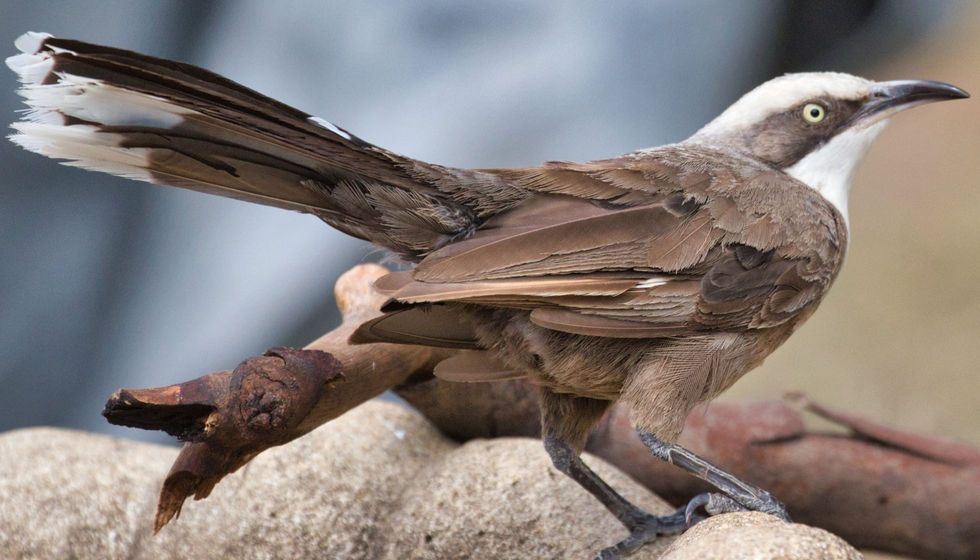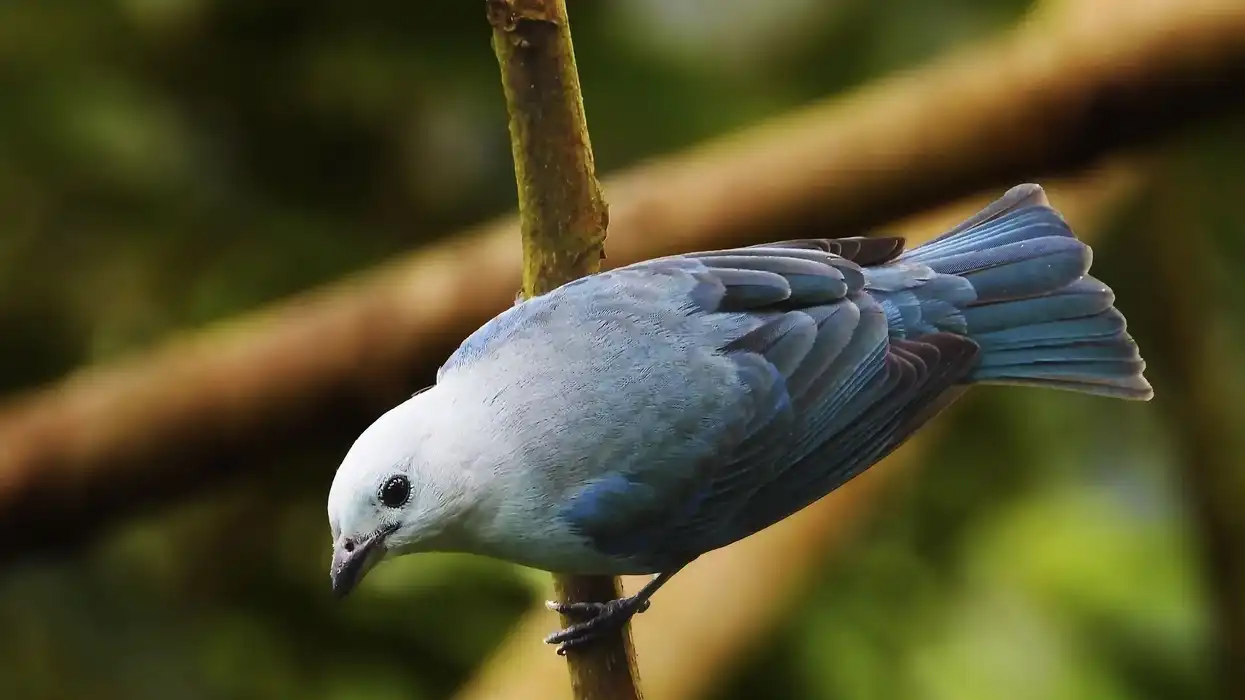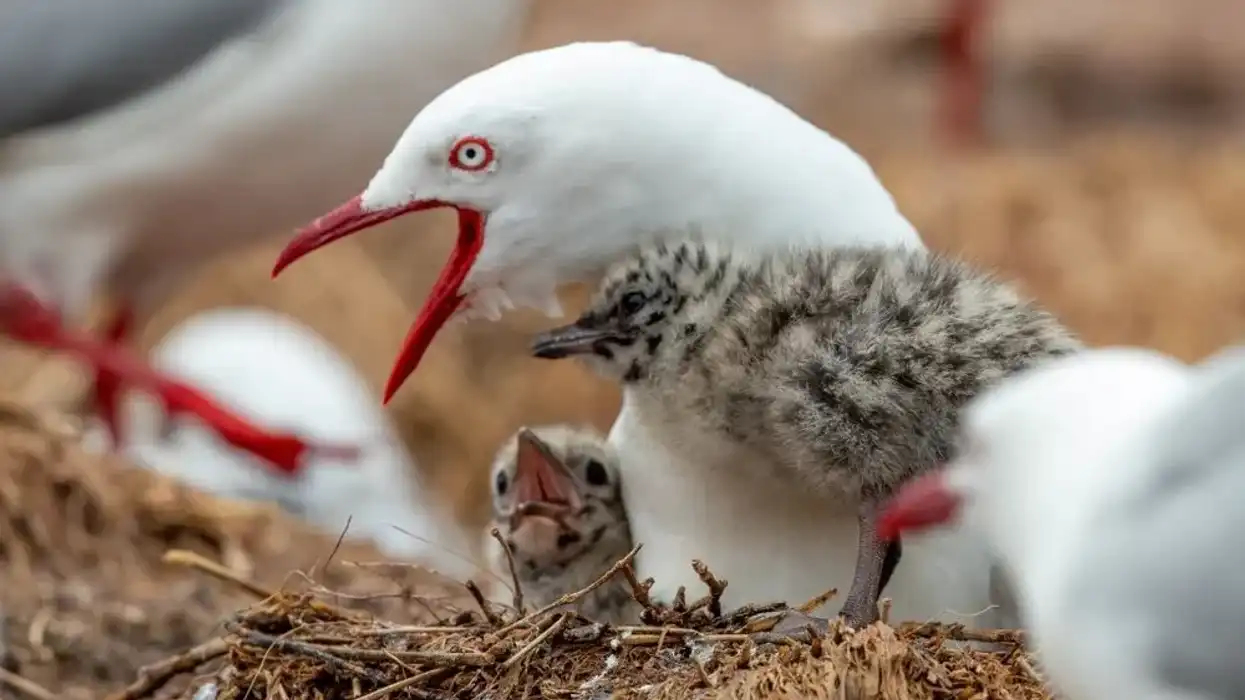The grey-crowned babbler (Pomatostomus temporalis) is a bird species of the family Pomatostomidae. Found in woodlands and open forests of northwestern, northern, central, and eastern Australia along with Indonesia and Papua New Guinea, these birds are the largest of the four Australian babblers.
Taxonomy shows that two subspecies of the bird are known to be found in Australia and New Guinea.
A grey-crowned babble (Pomatostomus temporalis temporalis) is found within Australia in Victoria, Queensland, New South Wales, and southeastern South Australia. This subspecies is also seen in New Guinea. The other subspecies called Pomatostomus temporalis rubeculus are found in Australia in the states of Western Australia, Northern Territory, Queensland, and northern South Australia.
Unlike the P.t. temporalis, the P.t.
rubeculus is only found in Australia. These birds are always found in groups, even when breeding. They do not leave the group ever.
Identification of these birds is easy as they have grayish-brown upperparts along with a dark long tail with a white tip. Orange-buff wing patches are seen on their short and round wings and they have a long, curved bill. These birds have pale underparts with lower breast, belly, and vent colored chestnut-brown.
They have a distinctive gray crown stripe and a dark face mask with a white eyebrow. The young birds have dark brown eyes with the irises turning pale with age. In three years, the iris becomes yellow in color.
P.t. temporalis has a creamy white breast sometimes mid-gray, while the P.t. rubeculus has a mid to deep rufous-brown breast.
For more relatable content, check out these fun hornbill facts and bowebird facts.
Grey-Crowed Babbler Interesting Facts
What type of animal is a grey-crowned babbler?
Pomatostomus temporalis is a species of small bird found in woodlands and open forest areas in their range. The bird forages on the ground and on the trunks and branches of trees and shrubs.
What class of animal does a grey-crowned babbler belong to?
Pomatostomus temporalis falls under the class of Aves in the kingdom of Animalia.
How many grey-crowned babblers are there in the world?
The population of the birds from Australia is not known. However, they are known to occur in a range of areas of 3,285,729.3 sq mi (8,510,000 sq km). The population is quite abundant, however, it is decreasing currently.
Where does a grey-crowned babbler live?
Pomatostomus temporalis is found in Australia, Papua New Guinea, and Indonesia. The bird is found in northwestern, northern, central, and eastern Australia.
According to the taxonomy of the species, there are two subspecies found of the grey-crowned babbler. The P.t.
temporalis as we already discussed is found in the states of Victoria, eastern Queensland which includes Cape York, south-eastern South Australia, and New South Wales. It is also sometimes seen in the Australian Capital Territory. The subspecies are also seen in Papua New Guinea.
The other subspecies, P.t. rubeculus, is only seen in Australia and is distributed across the states of Western Australia, Northern Territory, western Queensland, and small amounts in northern South Australia.
What is a grey-crowned babbler's habitat?
The habitat of the Pomatostomus temporalis includes temperate forest areas and subtropical or tropical moist lowland forest areas. The birds are found in a habitat of open forest areas and woodlands, inland plains with an open shrub layer, little ground cover, and plenty of trees.
Leaf litter and trees are one of the most important criteria for these birds. They are also sometimes found in golf courses.
Who do grey-crowned babblers live with?
The birds are always found in groups of two to 15 birds. These numbers are usually four to 12 in real life. A primary breeding pair can live with several non-breeding pairs in the groups.
The bird species is also seen foraging in groups among leaf litter, around fallen trees, and bark of shrubs and trees.
How long does a grey-crowned babbler live?
The average life span of this bird species is around four years.
How do they reproduce?
These birds live and are seen breeding in cooperative territorial groups which consist of two to 15 birds. The group usually consists of one dominant breeding pair and several non-breeding birds. Sometimes the group can also add two breeding pairs.
Nests are built by the breeding pair and other members of the group. Nests are made in trees, shrubs, and saplings. The primary female does most of the work while making the nests.
Two types of nests are present in the group. Roost-nests are used by all the bird members to live while the brood-nests are used by the breeding females.
Old nests are usually used year after year. The chamber of the nests is made of soft grass, bark, wool, and feathers. The breeding female in the nests is fed by all other members of the group while the young are fed by everyone.
Two broods are usual per year. Two to three brown eggs are laid and incubated for 23 days.
The young stay with the family group for one to three years after fledging after 23 days.
What is their conservation status?
The conservation status of the Pomatostomus temporalis is categorized as Least Concern by the IUCN Red List. This bird is affected by habitat loss.
Grey-Crowned Babbler Fun Facts
What do grey-crowned babblers look like?
Pomatostomus temporalis has a dark brown-gray plumage in the upperparts. The bird has a distinctive gray crown stripe. This is complemented with a dark face mask that contrasts with a white eyebrow of the bird.
The chin and throat are colored white with a pale gray lower breast. The species has a long and curved bill with short and rounded wings. There are cinnamon-brown wing patches with a long tail that has a white tip.
The eye is colored pale yellow in the adult birds. The subspecies, P.t. rubeculus, has a rufous lower breast and darker crown stripe.
Juveniles have dark brown eyes, however, they turn yellow in three years.
How cute are they?
They are considered quite cute.
How do they communicate?
They have a loud call which is easily heard. Most people call the bird 'yahoo' named after its call. The call sounds like a puppy sometimes barking and has been appropriately named in some cases. Some even say that the call sounds like a talkative group speaking to each other.
How big is a grey-crowned babbler?
Pomatostomus temporalis measure between 9.8-11.4 in (24.8-29 cm) in length.
How fast can a grey-crowned babbler fly?
The speed is not known.
How much does a grey-crowned babbler weigh?
The weight has a range of up to 0.17 lb (77.1 g).
What are the male and female names of the species?
Males and females are not given different names.
What would you call a baby grey-crowned babbler?
Babies are called young.
What do they eat?
The main diet of these birds includes insects, seeds, and invertebrates. Babblers usually diet on insects and invertebrates like grasshoppers, ants, wasps, cockroaches, termites, beetles, crickets, spiders, and flies.
Cats are known to be the main predator of the Pomatostomus temporalis.
Are they friendly?
The birds are quite sociable.
Would they make a good pet?
They are not usually considered pets.
Did you know...
Many species of babblers are used as food by snakes.
There are numerous names given to the grey-crowned babbler such as yahoo, happy Jack, grey-crowned chatterer, and many others like dog-bird, barker, barking-bird. The bird species is known to be quite talkative when in groups and the call also sounds like a puppy.
Why noise does the grey-crowned babbler make?
The loud scolding calls and chattering sounds like 'wee-oo'. While breeding, females have calls sounding like 'yah' and males 'ahoo'. The contact call sounds like 'chuck' between them.
The call is made to maintain pairs and also to establish territories.
Do babblers migrate?
They do not migrate.
Here at Kidadl, we have carefully created lots of interesting family-friendly animal facts for everyone to discover! For more relatable content, check out these chicken facts and frigate facts for kids.
You can even occupy yourself at home by coloring in one of our free printable grey-crowned babbler coloring pages.
Thank you to Kidadler Brian for providing the image of a Grey-crowned Babbler in this article.










